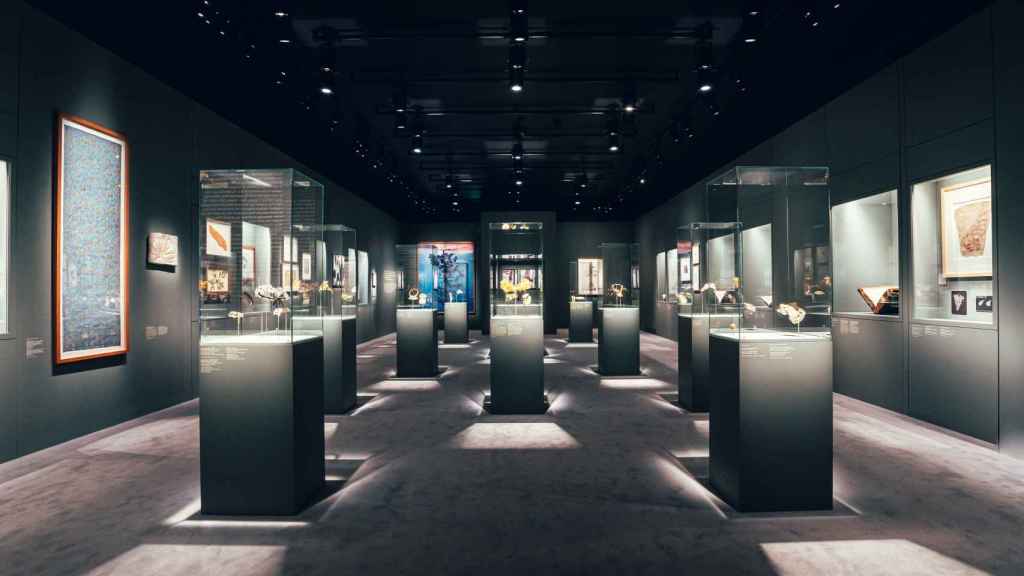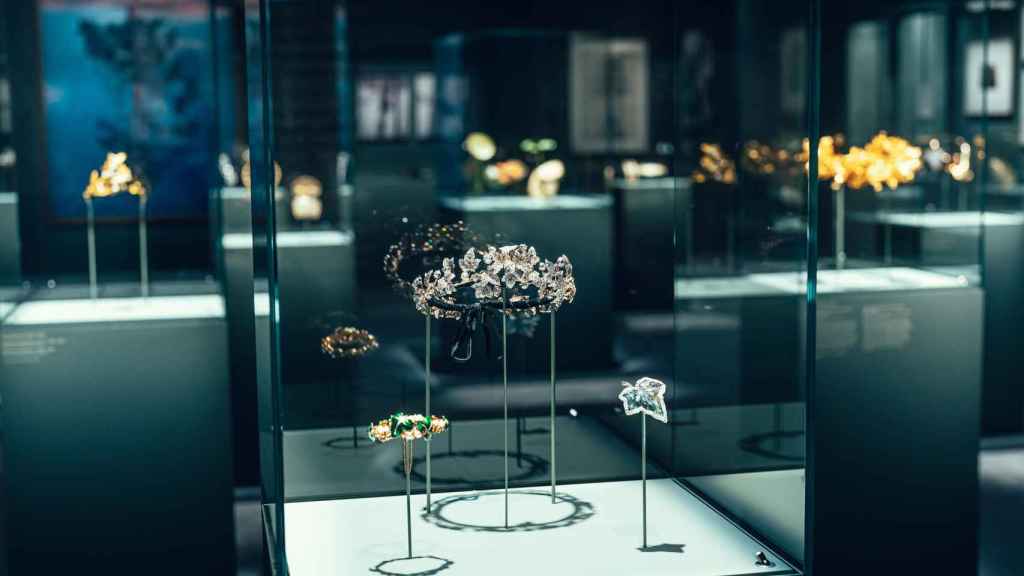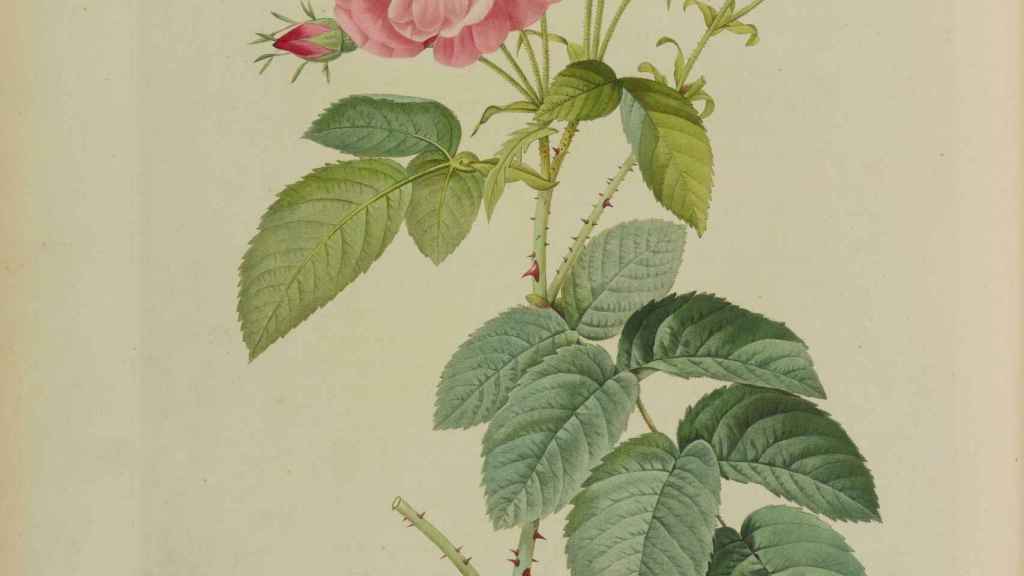Advertisements
[ad_1]
“My wish is to always stay like this, living peacefully in a corner of nature. I follow nature without being able to grasp it; perhaps I owe it to flowers to have become a painter”, said Claude Monet, the great master of impressionist painting, for whom nature became his great reference, and whose work is present in an unprecedented exhibition entitled Vegetal – The school of beautywhich has just debuted on Paris Fine Artsunder the auspices of Chaumet Jewelery House.
The splendid and ambitious exhibition, which can be seen until September 4, is curated by botanist Marc Jeanson, former director of the Herbarium at the National Museum of Natural History in Paris and current botanical director of the Majorelle Gardens in Marrakech. “The exhibition was born from the need to demonstrate the extraordinary beauty of plants in a world that currently does not stop to look at them”, explains Jeanson. “She explores nature as a source of inspiration and celebrates the absolutely extraordinary and timeless beauty of plantsits infinity of shapes, its textures and colors crossing different visions, eras and media, and inviting the visitor to look at nature through the universal prism of art”.
And he adds: “beauty is universal and the exhibition aims to show the importance that living beings and plants had in the training of artists, although this tradition is being lost”. the exhibition is an extraordinary journey of no less than 7,000 years of art and science through 400 works keys from artists and scientists, related through the dialogue between painting, sculpture, textiles, photography, furniture and a hundred Chaumet jewelry objects.
“It is an immersion in the botanical that juxtaposes primitive and contemporary creativity.says Marc Jeanson. “One of the oldest works is that of water lily flowers extracted from the mummy of Ramses II, which are the oldest dried plants in the world, dating back around 3,500 years. However, the oldest object is a fern fossil dating back to around 300 million years ago. This allows us to anchor the time of the exhibition in the origin of life, and show the public the creation time of the current flora, as well as the metals, stones and elements that make up the jewelry.” The exhibition reaches the present with works by around thirty contemporary artists, such as Anselm Kiefer, and special creations for the exhibition by Patrick Blanc and Zimoun.

“From the beginning we received enthusiastic reactions to the idea of the exhibition”, says the curator. “For this reason, with great generosity and trust, we obtained exceptional loans from more than 70 museums, foundations, galleries and private collectors, French and foreign, infinitely precise studies of the plant world.” To name a few, the National Museum of Natural History, the Orsay and Louvre museums, the Institut de France, the Victoria and Albert Museum, the Pistoia Musei, the Nancy School Museum, the Royal Botanical Gardens at Kew, the Kunsthalle in Hamburg, or the Albion Art Collection in Tokyo.
Some of the most extraordinary works are the Spring it's him Summer by Giuseppe Arcimboldo from the Louvre Museum, white lilies by Henri Fantin-Latour of the Victoria & Albert Museum, Lily pads It is lilies by Claude Monet, Chairs painted with floral motifs by Émile Galle, pansies (flowers) paintings by Eliot Hodgkin, a Christian Dior dress embroidered with lilies of the valley, the daffodils that bloom on the body of a Daum vase or the carnations by Bartolomeo Bimbi, a student of Lorenzo Lippi, active in the Medici court.
Along with these works of art, a multitude of jewelry creations from private collections highlight the uniqueness of the sample, such as: the Bedford tiara, a water lily bracelet, rooster and king brooches, bandeau– oak leaf tiara, to stop swallow, carnation tiara or the magnificent Queen Hydrangea brooch. All these exceptional pieces dialogue with other unexpected works, such as photographs of hyacinths by Dora Maar, tulip pistils by Brassaï or photographs of peonies by Robert Mapplethorpe; or with others equally surprising, such as Eugène Delacroix's studies of thistles, Le Corbusier's sketches of ivy, Otto Dix's painting of lilies or Gustave Courbet's flowers.
Chaumet, the naturalist jeweler
Chaumet House, associated with Beaux Arts for a decade, initiated the project. Chaumet was founded in 1780 by Marie-Étienne Nitot, who described himself as a “naturalist jeweler”. In fact, the artistic forms of her jewelry embody her botanical vision. It has one of the most important archives on the history of jewelry in Europe, which also includes drawings and photographs.
“Chaumet,” explains the curator, “is a jeweler whose sources of inspiration go far beyond the recording of floral symbolism such as roses or classic jewelry flowers, as well as integrating algae, cereals, wheat, trees, ferns, thistles, laurels, umbelliferas… offering a broad panorama.” Nitot was appointed official jeweler of the empire and Napoleon, and his wife Josephine's passion for plants and birds influenced the entire taste of an era of jewelry in the 19th century.

Chaumet jewelry at the exhibition
In the exhibition, tiaras by Marie-Étienne Nitot coexist with a field landscape by Raoul Dufy and a jacket embroidered with ears of corn by Yves Saint Laurent, all surrounded by a sound sculpture specially composed by Zimoun. Another example of unique dialogue in the exhibition are the lily-shaped bracelets by Joseph Chaumet (visionary director after whom the jewelry company was named in 1907) with a painting of a lily by Monet. Furthermore, three corset jewelry designs from the 1890s dialogue with the photographs cat's tail by Robert Mapplethorpe.
Everything in the exhibition is as surprising as nature itself, including the setting in which the exhibition was installed. Marc Jeanson designed the exhibition route from a botanist's point of viewlike a herbarium made up of the species present in Chaumet's creations, like a walk through landscapes, from the forest and the seafront to the lagoon and the wheat field.
Walk by the sea, the garden, the woods…
To begin the exhibition’s “immersive journey into nature”, the visitor is confronted with a drawing of André Vila’s parietal fresco made in the rock caves of Oued Djerat (Algeria). The exhibition is divided into thematic groups: the sea, the flowers, the ornamental garden, the forest, the coast, the sugarcane field, the wheat field…
“This allows the visitor to walk freely through successive landscapes, going from the outline of a cave painting that is almost 5,000 years old to a cardboard forest by contemporary artist Eva Jospin”, explains the exhibition curator. “Each section is announced by a piece that introduces the audience to the universe they are entering.sometimes a key work, sometimes less known.”
Then, lilies by Monet are obviously present, but also the lilies, least expected. The same with Le Corbusier, whose surprising studies of buds and leaves are presented. The two paintings by Giuseppe Arcimboldo, Spring It is Summer They are the only works in the exhibition with human representation. to close The pearl necklace table, Gifted to Louis XIV by Cardinal Barberini, a spectacular testament to the golden age of Florentine furniture in hard stone marquetry. On this table, which will be restored by Chaumet, lilies, daffodils, vines or hyacinths are gathered and linked together, serving as a metaphor for our current view of living beings and serving as a mirror for the tapestry. millefleurs that is in front of her.
Josephine Bonaparte: rehabilitating the role of women
The multiplicity of points of view contained in the exhibition also invites the (re)discovery and rehabilitation of great female figures in botany throughout history. Among them, Empress Joséphine occupies a special place. Faithful customer of the House of Chaumet since 1805the empress was passionate about natural sciencesto the point of being recognized for her innovative contributions to botany and horticulture.
A patron, he helped establish the reputation of Pierre-Joseph Redouté, the artist known as the Rafael das Flores, as evidenced by its representations of roses, lilies and poppies that appear in the exhibition. “It is not a feminist gesture, but a reflection of the historical importance that women have had in the study and representation of plants”, explains Marc Jeanson. "It is fascinating! Very different from what happens in the field of zoology or mineralogy.”

Detail from 'Stormy Rose', by Pierre-Joseph Redoute and Claude Antoine Thory. Photo: Paris Museum of Fine Arts
Thus, from Eva Jospin's forest that welcomes visitors with music specially designed for the event by Laurence Equilbey / Insula Orchestra, women exert a powerful presence in the exhibition: bunches of grapes by Séraphine de Senlis, seaweed by Yvonne Jean-Ha, tulips by Barbara Regina Dietzsch and Berthe Morisot, lilies by Laure Albin-Guillot, carnations by sisters Marthe and Juliette Vesque, without forgetting a bronze by Sarah Bernhardt in dialogue with algae plants by Anna Atki…
At certain moments in history, as occurred during the time of Emperor Napoleon and Josephine, great naturalist expeditions and, therefore, nature exerted a real fascination. “So,” notes Jeanson, “they knew how to look at her, They noticed its beauty and took care of it in a way we no longer know how to do today.; In fact, another objective of the exhibition is that the visitor can, through the artists' eyes, question their knowledge about plants, and be able to understand them”.
Nature is a key issue at the heart of our time, as our world is being shaped by a new awakening to the environment, but paradoxically, we have never suffered so much from this weakening of the living world, natural systems and alarming disappearance of living species.
Marc Jeanson, who has dedicated his life to the study of nature, concludes: “nature is the oldest creative force, but also the most incredible and powerful. Preserving the living is also preserving the beauty of the world. Beauty is one of the most powerful experiences for relating to beings, and nature tells us: we must take the beauty of the world seriously. Every flower that seems beautiful to us is the echo of beings that preceded us on this earth.



